In general, ivy plants represent a faithful marriage, a strong bond, wealth, good luck, and eternal life.
The flower got the meaning of steadfast relationship due to its strong, wraparound vines wherever it is placed. Also, as a perennial plant, its leaves stay green all year, so it makes a good symbol of immortality.
But, depending on the type, ivy meanings can vary or change. For example, the Devil’s Ivy expresses abundance and fortune, while the heart-shaped English ivy conveys love and closeness.
Read through this complete guide to know more about the trailing ivy flower—its meaning, cultural relevance, uses and benefits, and more!
Basic Information about the Ivy Flower
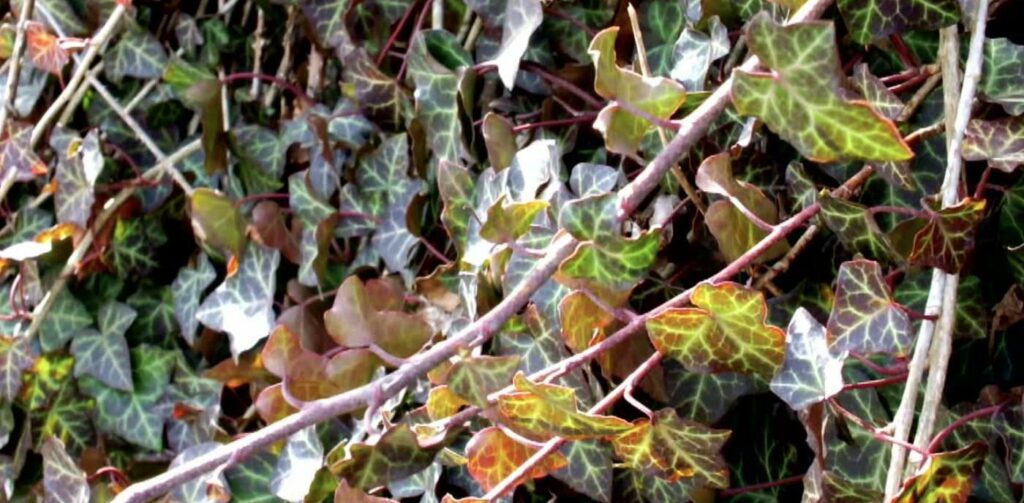

Genus: Hedera
Family: Araliaceae
No. of varieties: Approximately 15
Type: Evergreen perennial
Native Habitat: Europe and West Asia
USDA Hardiness Zones: 4 to 13
Blooming Time: From early summer to fall
Planted as: Hanging, basket, trellis, shelf, and ground-cover plants
Ivy is a dramatic climbing or trailing vine in the ginseng family (Araliaceae). All of them comprise about 15 varieties in the genus Hedera.
It originated in Europe and Western Asia. Woodlands, meadows, forest edges, hedgerows, and hills are the areas where it thrives.
Ivies prefer moderate to cool daytime temperatures and a bit cooler at nighttime. To be exact, they’re comfortable in USDA hardiness zones of 4 to 13.
As opposed to other plants, they showcase their small clustered blossoms from late summer to early autumn. So, they’re great to substitute for your other flowers that are winding down at this time.
Thanks to their attractive cascading foliage, ivy plants are much sought-after climbing ornamentals. They’re often placed in indoor baskets, hanging ceiling pots, or shelves on the porch, patio, or garden.
Physical Description of Ivy
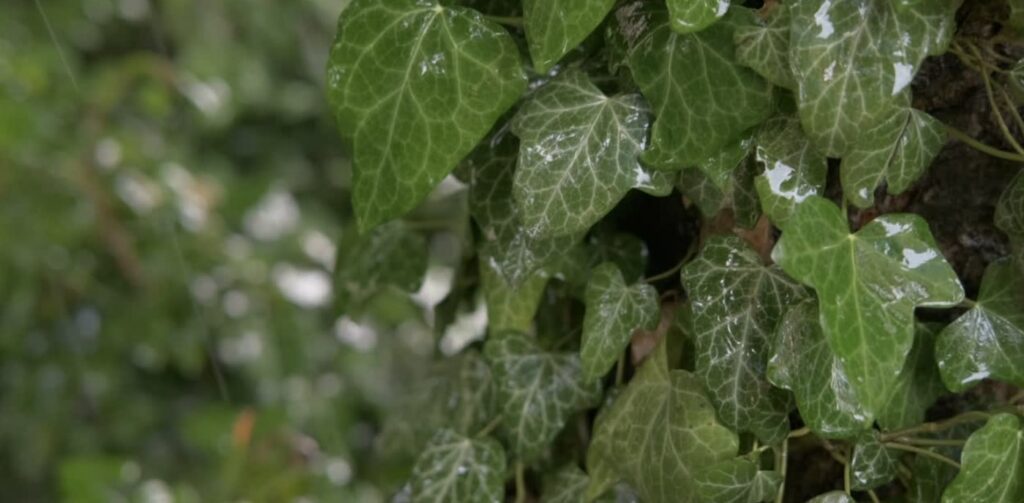

The woody perennial ivy can climb and spread easily where it is grown, be it on walls, cracks, trees, or the ground. It does this through its aerial roots with adhering stem disks.
While its slender tendrils grip and hold on tight to something, the plant’s outer vines focus on growing and producing leaves. Ivy leaves are often three or five-lobed.
The common ivy bears umbels or a small cluster of flowers, which are usually yellow-green or white-green in shade. However, other species develop bigger and more noticeable bell or funnel-shaped flowers.
Moreover, each of these flowers is rich in nectar that can attract pollinators to your garden, like bees, butterflies, and moths.
Also, they can produce black-blue berries which don’t ripen until early spring or late winter. These also act as a food source for winter birds and other animals.
The Mature Height of the Ivy Plant
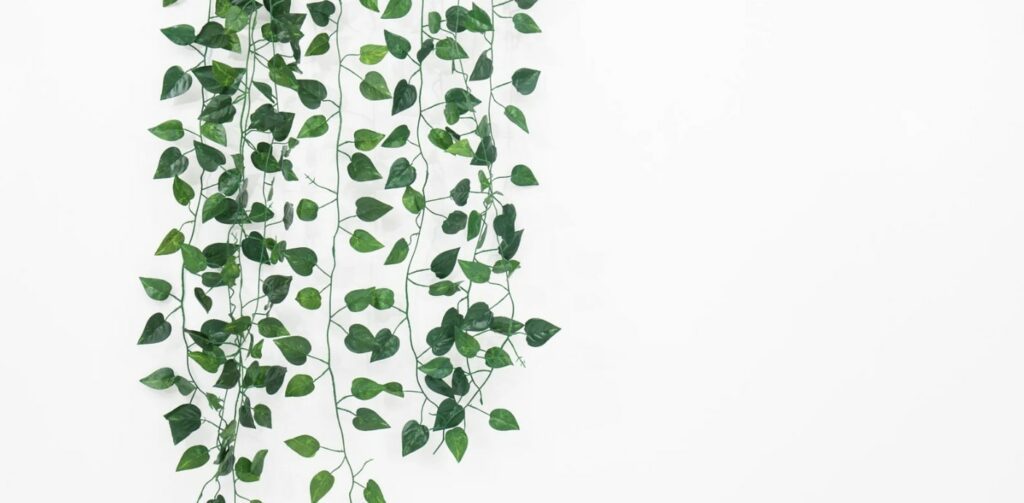

On the ground, ivies can get between 6 to 8 inches high. When it climbs on walls, arbors, or fences, it can reach a considerable height of up to 50 feet.
The ivy flower can grow at a moderate to quick rate given the right growing conditions. It’s happy and at home in fertile, damp, and well-drained soil while receiving full or shaded sun daily.
What are some of the popular types of ivies?
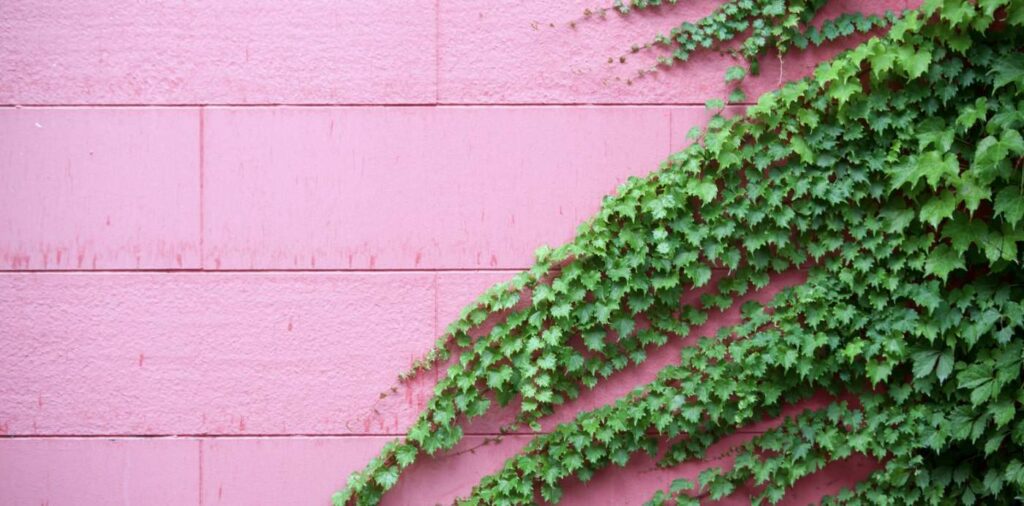

Here are some of the most popular ivy varieties people like to get:
- English Ivy (H. helix) – It has the typical ivy leaf shape and small greenish flowers. It’s a great climber, having aerial rootlets that can extend up to 80 feet upwards!
- Irish Ivy (H. araliaceae) – This is a variety of English Ivy. It’s mostly used as ground cover by the trees as a substitute for grass.
- Algerian Ivy (H. algeriensis) – This plant is known for its decorative white-brown leaves. It’s found in North Africa and has a number of cultivars available.
- Atlantic Ivy (H. hibernica) – This species features fleshy three-lobed leaves native to Europe’s Atlantic coast. However, they’re considered an invasive weed on the West Coast of the US.
- Glacier Ivy (H. helix) – It’s yet another species of the Hedera helix. It has distinct lance-shaped leaves with a green and white-yellow hue.
Trailing and elegantly shaped, the Glacier Ivy makes an excellent shelf, hanging basket, or trellis plant.
Note: Contrary to popular belief, the Boston Ivy and Poison Ivy are not real ivy plants although they look like one. They’re actually classified under different genera and families.
Ivy Word Origin
The word ivy is of Old English and Latin origin. The Old English word from which it is derived is ifig, and the classic Latin name is Hedera (its genus name). Both of which mean vine or ivy.
Ivy Flower and Its Meaning
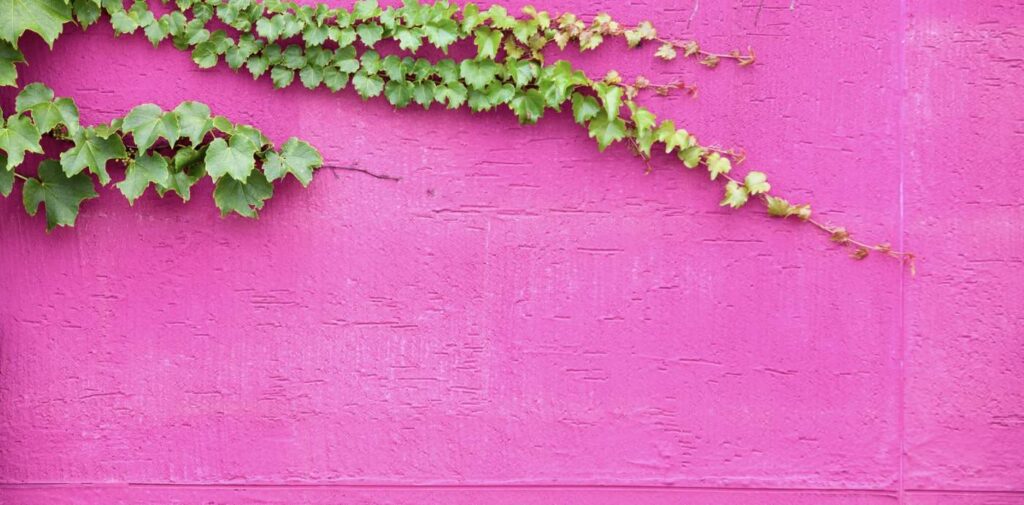

The creeping ivy flower is mainly regarded as a symbol of devotion, faithfulness, and marriage.
That’s because it holds tightly to or around the object it grows on and can resiliently thrive even in disturbed areas. Also, ivies look like a wedding cord that symbolizes the groom and bride’s everlasting union and lifetime bliss.
But ivies aren’t only for couples. They’re also symbolic of the solid friendship and trust of two people. These friends help and are there for each other no matter what happens.
Besides that, green ivies express abundance, vigor, and good luck.
In Christian and pagan traditions, these flowers mean hope and eternal life, as they grow and spread enthusiastically to make the place seem like a spring garden paradise.
Plus, one can also say that it is symbolic of Mother Nature—constantly creating one precious life after another, keeping the cycle of life going.
What’s more, back in the day, the ivy flower was used as an effective charm that warded off evil spirits and dark, powerful magic cast by malicious witches.
Ivy Flower Meaning by Color
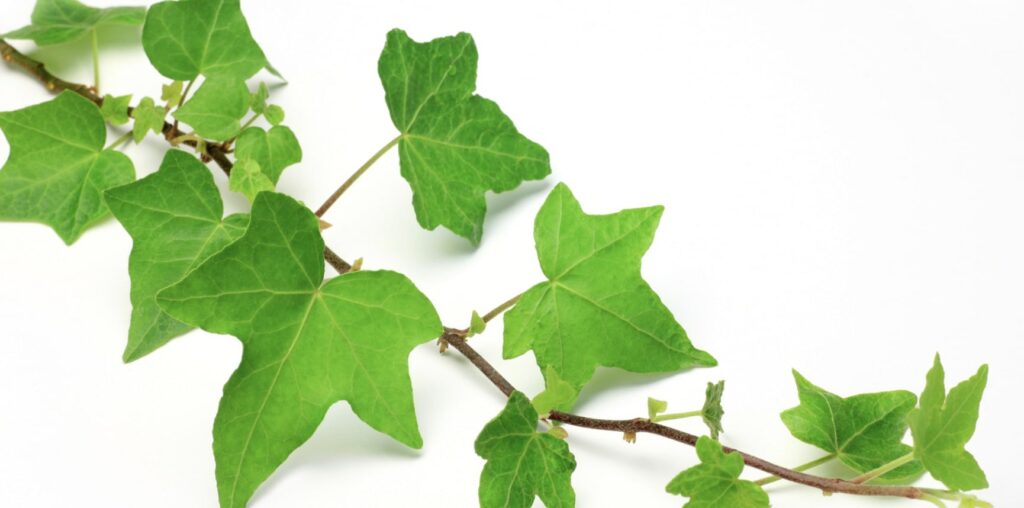

The meaning of ivy can differ according to its leaf or flower color too. Let’s go over each of the colors below:
Green-Yellow Ivy Meaning
Green-yellow is a lovely color that depicts cheerfulness, energy, and calmness.
Aside from that, the shade symbolizes health, abundance, and fertility. And for this reason, it’s easily tied to the meaning of good luck and fortune too!
You can create a tropical and exciting hue by mixing green-yellow flowering ivies with other like-colored plants in your home or garden. However, if you like a toned-down look, try incorporating yellow-green ivies with pastel-shaded flowers in the garden.
Green-White Ivy Meaning
White is a delicate and elegant hue for an ivy plant. These white flowers contrast pretty well with its usually green tropical leaves, creating a calm combination of colors.
Traditionally, white means light, purity, innocence, inner peace, and devotion. Whereas green can be regarded as a symbol of love—in fact, love potions are commonly green in magic.
Together, green-white ivies stand for a perfect and loyal marriage, and so, they can be given to a newly married couple as a special gift.
White ivies can class up your garden, porch, or greenhouse in any season, whether it be spring, summer, or fall.
Green-Silver Ivy Meaning
The English ivy sports a large silver trimming in its leaves. Silver is a noble color that people associate with skill, glamor, modernity, fortune, and class.
In addition, other meanings of silver are innovativeness, sophistication, and refined character or actions.
Green-silver ivies can beautify your home too. They can be planted in hanging baskets or window planters with their abundant trailing style.
Ivy and Its Cultural Relevance
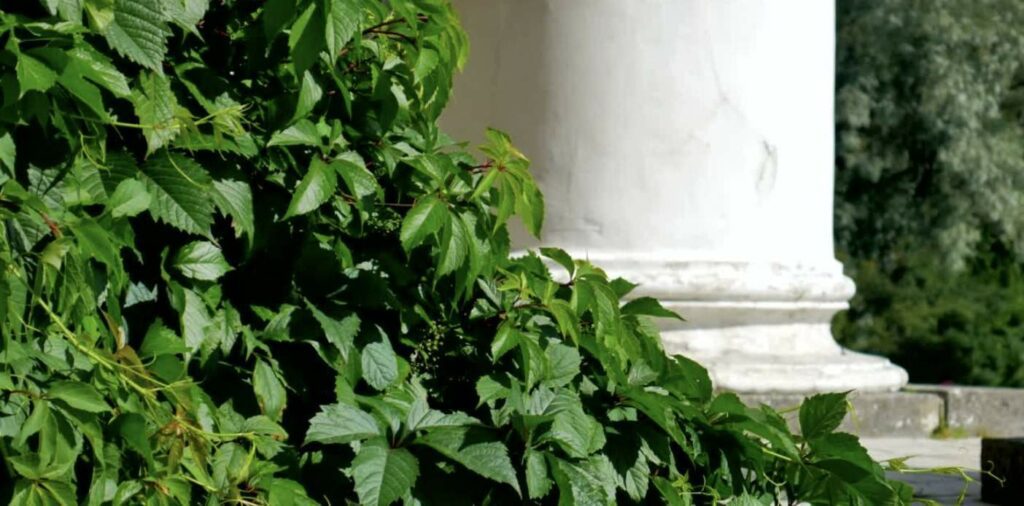

Now that we know its general meanings, let’s discuss the ivy flower’s cultural relevance in various countries:
In Egypt
In Egyptian myth, the ivy represents Osiris who is the god of the underworld, fertility, life, death, resurrection, and agriculture, among other things. People also sometimes offered these beauties whenever they prayed to him or asked for help.
So that’s how the trailing flower had gained its meaning of eternal life or immortality.
In England
Floriography or “the language of flowers” rose to popularity in Victorian England. This old way of communication gave the ivy flower the meanings we mentioned above: friendship and affection as well as perfect marriage and fidelity.
In Greece
In Ancient Greece, ivy was associated with faithfulness and true love. So, often, a married couple received a wreath of ivy from friends or family members during this special event.
Also, Dionysus, the Greek god of wine, grape orchards, theater, fertility, religious bliss, and madness. He’s usually depicted in art and literature as wearing a hat with grapes and ivy wreaths.
Due to its evergreen nature and lush fast-growing foliage, the ivy also meant eternal life and sexual desire in Greek mythology.
In Rome
Wine and fertility god Dionysus is called Bacchus in Rome. His sacred plants are ivy, grapevine, and bindweed.
During the wine festival honoring the god, it was a custom to drink large quantities of wine, and people believed that wearing an ivy wreath on their head protected them from being drunk and hungover.
The Ivy Flower in Numerology
The ivy flower lines up with the number two in numerology. The number two is a favorable number representing partnership, love, and harmony in relationships.
Is there an ivy flower superstition?
Similar to the holly, the ivy flower is a symbol of the Christmas season and holiday cheer. But people believe that it must never be brought into the house before Christmas Eve, or something bad is going to happen.
Concerning your garden, the ivy also shouldn’t be dominated in number by other evergreen plants. The reason is that people claim that it’s a sign of bad luck that will invite sickness and misfortune.
Conversely, if you want the ivy plant to bring you good luck, then you can display it with a holly flower. Holly is perceived to be masculine and ivy feminine, and they complement each other well.
The Ivy Flower and Its Uses
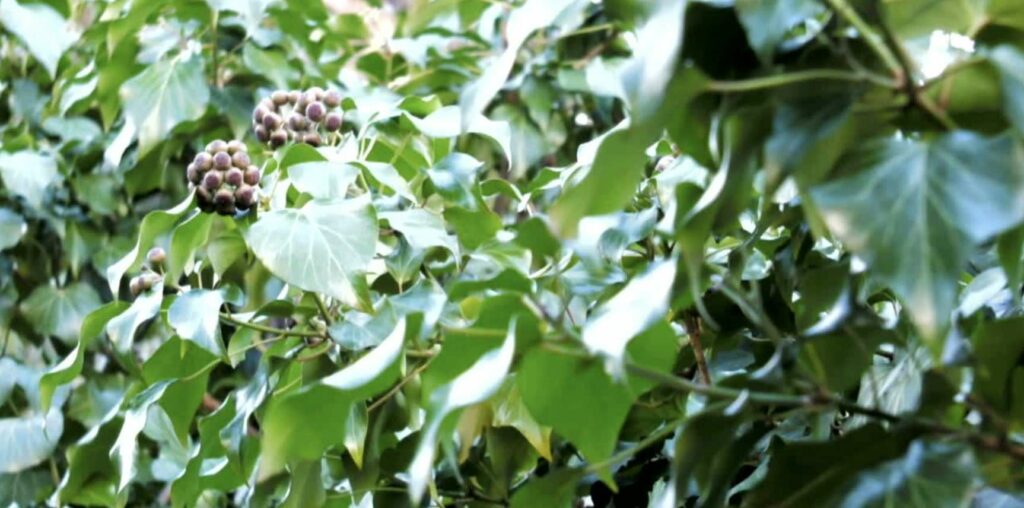

In the old days, ivy extracts that were made from the fruit of the plant were used to treat a wide variety of conditions from dandruff to skin wounds and infections.
But today, the ivy flower is used in cough medicines throughout much of Europe. Due to its active compounds, it has become an extremely reliable treatment for dry cough, bronchitis, and other respiratory issues.



